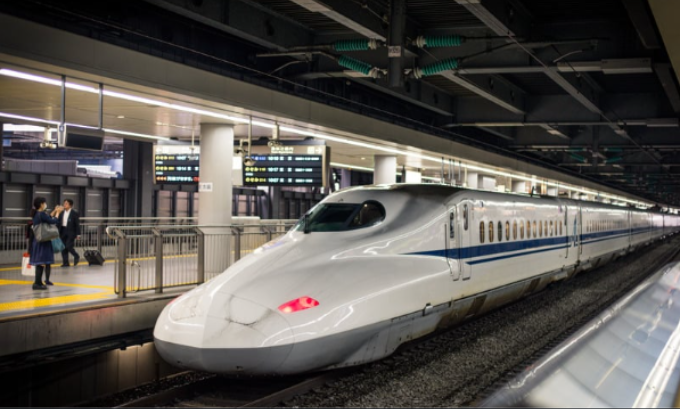For six decades, the bullet train Japan, known as the Shinkansen, has been more than just a mode of transport; it’s a cultural icon, a symbol of Japanese ingenuity, and the lifeblood of the nation. As it glides effortlessly through cities and countryside, the Shinkansen is a moving testament to a country that seamlessly blends futuristic innovation with deep-rooted tradition. This year marks its 60th anniversary, a perfect moment to reflect on its journey and explore the incredible destinations it makes accessible.
This article invites you on a virtual journey aboard the Shinkansen, tracing its history from its revolutionary beginnings to its modern-day marvels. We will explore how this high-speed rail network has shaped Japan’s economy and culture, connecting bustling metropolises with serene landscapes. By following its path, from the iconic Tokaido Shinkansen to the newer Hokuriku Shinkansen, you’ll discover how to experience the heart of Japan, from majestic mountains to ancient artisan towns.
Table of Contents
The Shinkansen: A Revolution on Rails
What is the Shinkansen? It’s Japan’s world-renowned high-speed railway network, famous for its punctuality, safety, and incredible speed. For 60 years, the bullet train Japan has been a pillar of the nation’s infrastructure, shrinking distances and connecting people like never before. It represents Japan’s post-war economic miracle and its commitment to technological excellence. To understand Japan’s modern identity, one must understand the story of the Shinkansen. The development of high-speed rail technology has been a significant milestone, and if you want to know more about technological advancements, you might find the coverage of the Consumer Electronics Show 2025 interesting.
A Journey Back in Time: The Birth of the Tokaido Shinkansen
The story of the Shinkansen begins at Tokyo Station, a grand and bustling hub that serves as the heart of Japan’s railway system. In 1964, just in time for the Tokyo Olympics, the first-ever high-speed line, the Tokaido Shinkansen, was inaugurated. This line connected Tokyo to Osaka, a journey that previously took nearly seven hours. The Shinkansen slashed this time to just four, forever changing travel in Japan.
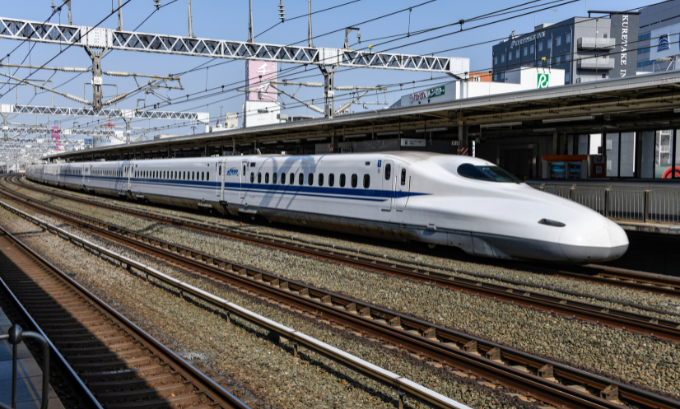
This original route became known as “The Golden Route,” not just for its economic importance but for the cultural treasures it unlocked. Travelers could now easily journey between Japan’s two most significant urban centers, with glimpses of the majestic Mount Fuji from their windows. This remarkable feat of engineering captured the world’s imagination and set a new standard for rail travel globally. The discussion around how Israel was established offers a different historical perspective on nation-building and development.
My First Shinkansen Experience: A Personal Reflection
I remember my first ride on the Shinkansen vividly. Standing on the platform at Tokyo Station, the sleek, white train with its iconic pointed nose pulled in with silent precision. It stopped exactly where the markings on the platform indicated, with the doors aligning perfectly. Inside, the cabin was quiet, clean, and spacious. As the train departed, there was no jolt, just a smooth, almost imperceptible acceleration.
Looking out the window, the urban sprawl of Tokyo gave way to suburbs, then to a patchwork of green rice fields and traditional houses. And then, there it was—Mount Fuji, its snow-capped peak rising serenely above the clouds. It was a picture-perfect moment, one that millions of travelers have experienced. It’s on this journey that you truly understand why the bullet train Japan is celebrated not just for its speed, but for the graceful and poetic way it connects people to the landscape. For those interested in the broader context of global events, the Middle East Crisis 2025 provides insights into ongoing international challenges.
What I Like About the Shinkansen Experience
- Punctuality: The average delay is less than a minute. This reliability is ingrained in Japanese culture and is a point of national pride.
- Comfort: The seats are spacious, recline generously, and always face forward. The cabins are impeccably clean and quiet.
- Efficiency: From purchasing tickets to boarding, the entire process is streamlined and user-friendly, even for non-Japanese speakers. For updates on travel regulations, the Japan visa update 2025 is a useful resource.
- Scenic Views: The routes are designed to offer stunning vistas of Japan’s diverse geography, from coastal lines to mountain ranges.
Areas for Improvement
- Cost: While efficient, Shinkansen travel can be expensive for tourists. A Japan Rail Pass can offer significant savings but requires advance planning.
- Luggage Space: Newer trains have dedicated luggage areas, but on older models, finding space for large suitcases can be a challenge.
- Wi-Fi Connectivity: While improving, on-board Wi-Fi can still be spotty in tunnels and remote areas.
Exploring the New Golden Route: The Hokuriku Shinkansen
While the Tokaido line remains the classic journey, the Hokuriku Shinkansen has opened up a “New Golden Route,” connecting Tokyo with the stunning northern coast of Japan. Launched in 2015 and recently extended, this line offers travelers a chance to explore regions previously considered off the beaten path. This route showcases a different side of Japan, one rich in natural beauty, traditional arts, and culinary delights. Understanding the complexities of global politics, such as why Ukraine can’t join NATO now, provides a broader context for international relations.
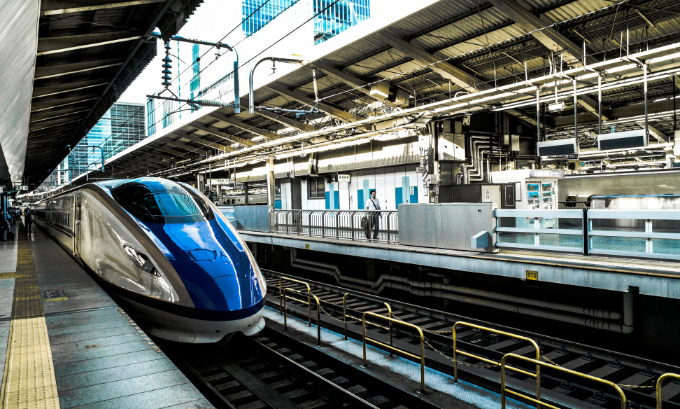
Unazuki Onsen: A Retreat into Nature’s Embrace
A journey on the Hokuriku Shinkansen can lead you to Unazuki Onsen, a charming hot spring town nestled at the entrance to the spectacular Kurobe Gorge. The name “Unazuki” is said to have come from a noble who nodded (“unazuki”) in approval after drinking the mineral-rich spring water. For those exploring Japan’s nightlife, learning about Japan after dark offers another dimension of the country’s culture.
Here, you can soak in open-air baths while listening to the rush of the Kurobe River. The town is the starting point for the Kurobe Gorge Railway, a scenic narrow-gauge train that winds its way through one of Japan’s deepest and most beautiful ravines. This side trip is a perfect example of how the bullet train Japan serves as a gateway to more intimate, nature-focused experiences. The topic of democracy in America summary offers a contrasting look at a different nation’s foundational principles.
Kanazawa: The City of Gold and Geishas
Further along the Hokuriku line lies Kanazawa, a city that rivals Kyoto in its cultural richness but with a fraction of the crowds. During the Edo Period, Kanazawa was one of Japan’s wealthiest castle towns, and its artisans mastered the art of gold leaf production. Today, 99% of Japan’s gold leaf comes from Kanazawa, and you can find it everywhere—adorning temples, lacquered onto crafts, and even sprinkled on ice cream. Discussions on global economic dynamics can be further explored by understanding the Iran nuclear deal importance.
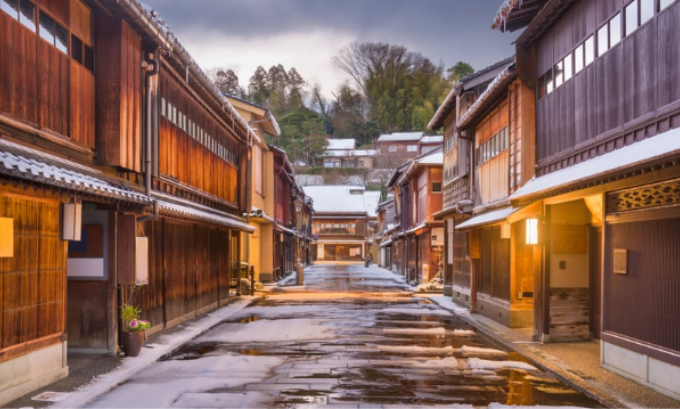
The city’s historic districts, like the Higashi Chaya District with its beautifully preserved wooden teahouses where geishas still entertain, transport you back in time. The Kenrokuen Garden, considered one of Japan’s three most beautiful landscape gardens, is a masterpiece of horticulture. Kanazawa perfectly illustrates how the bullet train Japan brings ancient history within easy reach of the modern traveler. For more about life in Japan, the article on living cost in Japan Tokyo provides practical information.
Wajima: Resilience and Traditional Craftsmanship
The Hokuriku Shinkansen also provides access to the rugged Noto Peninsula and the city of Wajima. This coastal town is famous for its intricate lacquerware, a craft passed down through generations. Though recently affected by a powerful earthquake, Wajima is a symbol of resilience. The local community is working tirelessly to rebuild, and visiting the area to support its artisans and local businesses is a meaningful way to contribute to its recovery. Visiting places like Disneyland Tokyo offers a different kind of cultural experience in Japan.
Naoyuki Ueno, a former Shinkansen driver and now an executive at Central Japan Railway Company, reflects on this connection. “The Shinkansen is not just about connecting cities,” he says. “It’s about connecting people to their heritage and supporting communities, especially in times of need.” His perspective underscores the deep social role the bullet train Japan plays in the nation’s fabric. To learn more about other aspects of Japanese culture, you might be interested in Japanese family dynamics. The world of technology is also vast, and understanding tools like SumoSearch can be beneficial.
The Shinkansen Network at a Glance
| Shinkansen Line | Key Destinations | Unique Feature |
|---|---|---|
| Tokaido Shinkansen | Tokyo, Kyoto, Osaka | The original “Golden Route,” with views of Mount Fuji. |
| Sanyo Shinkansen | Osaka, Hiroshima, Fukuoka | Connects to the island of Kyushu. |
| Tohoku Shinkansen | Tokyo, Sendai, Aomori | Travels through Japan’s scenic northern region. |
| Joetsu Shinkansen | Tokyo, Niigata | Popular for accessing ski resorts in winter. |
| Hokuriku Shinkansen | Tokyo, Nagano, Kanazawa | The “New Golden Route” along the Sea of Japan. |
| Kyushu Shinkansen | Fukuoka, Kumamoto, Kagoshima | Traverses the southern island of Kyushu. |
| Hokkaido Shinkansen | Aomori, Hakodate | The newest line, connecting to Japan’s northernmost island. |
The evolution of technology, as seen in the Consumer Electronics Show 2025, continues to shape our world in many ways. Additionally, understanding global issues like the Israel-Palestine war history overview and the Gaza food shortage humanitarian crisis 2025 gives a broader context to our interconnected world. Exploring Tokyo Motion and Japan nightlife can also enhance your travel plans.
The Future of the Shinkansen and Sustainable Travel
As the world grapples with the need for more sustainable travel, Japan’s Shinkansen stands as a shining example. High-speed rail is significantly more eco-friendly than air travel, producing far fewer carbon emissions per passenger. The Shinkansen network’s efficiency and reach encourage a mode of travel that is both fast and responsible. For those interested in business and success, insights on goal setting for success can be valuable.
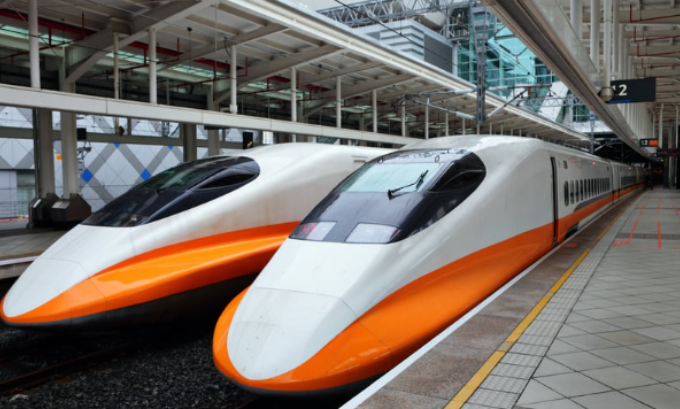
The innovation doesn’t stop. The next generation of Shinkansen trains is already in development, promising even greater speeds, comfort, and energy efficiency. The ambitious Chuo Shinkansen, a maglev line currently under construction, will eventually connect Tokyo and Nagoya in just 40 minutes, traveling at speeds over 500 km/h. This continuous pursuit of excellence ensures that the bullet train Japan will remain at the forefront of global transportation for decades to come. Understanding complex geopolitical situations, like the Trump-TikTok deal or the China military power report 2025, highlights the ever-changing global landscape. If you’d like to learn more about the Consumer Electronics Show 2025, you’re welcome to read this detailed article at gogonihon.jp.net. And for a different perspective, mindjournal.co also offers in-depth coverage. Topics such as US-Israel relations and the Russia-Ukraine war declaration also shape our world.
A Journey Worth Taking
Celebrating 60 years, the Shinkansen is far more than a train. It’s a journey through Japan’s past, present, and future. It’s the thread that connects the neon-lit energy of Tokyo with the tranquil beauty of a hot spring in the mountains, the grandeur of Mount Fuji with the delicate artistry of gold leaf in Kanazawa. Riding the bullet train Japan is an essential part of the Japanese experience, offering a unique window into the soul of a nation that values precision, beauty, and harmony. As you plan your next adventure, consider letting the Shinkansen guide you through the heart of this incredible country. Staying informed on travel updates like the India visa update is always a good idea. For those interested in publishing content, platforms like Techbullion guest post and services like LinkLuminous are available.
Frequently Asked Questions
1. What is the Shinkansen?
The Shinkansen, also known as the bullet train Japan, is the country’s high-speed railway network, famous for its speed, safety, and punctuality.
2. How fast does the bullet train go?
Most Shinkansen trains operate at speeds between 240 and 320 km/h (150 to 200 mph), making it one of the fastest ways to travel in Japan.
3. Is the Japan Rail Pass worth it for Shinkansen travel?
If you plan to make multiple long-distance trips on the Shinkansen, the Japan Rail Pass can offer significant savings. It’s best to calculate the cost of individual tickets versus the pass to see what makes sense for your itinerary.
4. Can I see Mount Fuji from the Shinkansen?
Yes, on a clear day, you can get a spectacular view of Mount Fuji from the Tokaido Shinkansen line between Tokyo and Osaka. For the best view, book a seat on the right side when traveling from Tokyo.
5. How do I buy tickets for the Shinkansen?
Tickets can be purchased at ticket offices in major train stations, through ticket machines, or online via the official railway company websites.
6. What are the main Shinkansen lines for tourists?
The Tokaido Shinkansen (“The Golden Route”) connecting Tokyo, Kyoto, and Osaka is the most popular. The Hokuriku Shinkansen (“The New Golden Route”) is gaining popularity for its access to destinations like Nagano and Kanazawa.
7. Are there different classes of travel on the Shinkansen?
Yes, most Shinkansen trains offer “Ordinary Car” (standard class) and “Green Car” (first class), which has wider seats and more legroom. Some lines also offer “Gran Class,” a premium luxury service.
Author Bio & References
Author: Alex Carter is a travel writer and railway enthusiast with over a decade of experience exploring Japan. He has ridden every Shinkansen line and is passionate about sharing the cultural and scenic wonders accessible via Japan’s world-class rail network. His work focuses on sustainable and culturally immersive travel.
References:
- Central Japan Railway Company. (2024). Shinkansen 60th Anniversary.
- Japan National Tourism Organization. (2024). Shinkansen.
- Ueno, N. (2024). Personal communication.
- Ministry of Land, Infrastructure, Transport and Tourism. Railway Statistics.
- Additional insights from BBC Travel’s “Train Journeys” series.
- techbullion.in
- gogonihon.jp.net/tokyo/
- mindjournal.co/talk-about-israel-and-hamas-war/
- ponta.in/monarch-networth-share-price/
- gogonihon.jp.net/how-to-use-apple-ai/
- mindjournal.co/tiktok-banned-countries-list-2025/

